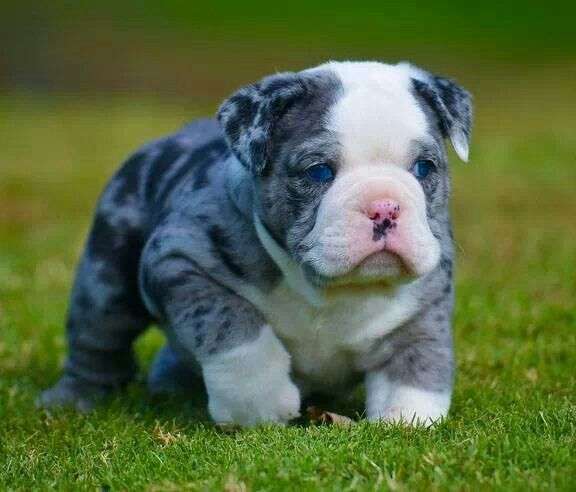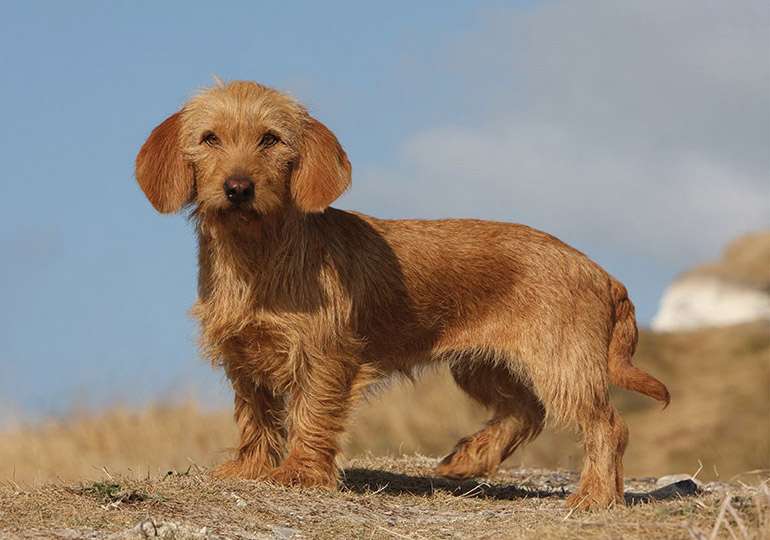
Description
Blue coats are the primary physical characteristic that sets Blue English Bulldogs apart from all other English Bulldog breeds. Blue noses and blue eyes are two other characteristics that are common in Blue English Bulldogs. These dogs have fawn or white undercoats, therefore they are not totally blue. Short and fine-textured is the coat. Each dog will have a slightly different shade of blue.
Blue English Bulldogs else like standard English Bulldogs. The dog has a huge head with short, folded ears and a wedge-shaped body. The face appears flattened due to the exceedingly small muzzle. An underbite dog is one in which the lower jaw extends forward of the upper jaw, exposing the lower incisors. The medium-sized English Bulldog has a stocky body, huge shoulders, and a powerful and broad chest.
They walk differently and position themselves with a strong, base-wide stance because to their small, robust legs.
Genes for Coat Colors
The dilution gene, a recessive gene, is mostly responsible for the blue coat colour in dogs. Dogs’ principal pigment, eumelanin, which is typically black in colour, is impacted by the dilution gene. The genetic modification of eumelanin to produce other colours, including blue (grey), causes different colour diversity in English Bulldogs. The genetic loci, or Loci, for blue English Bulldogs are designated D for dilution. It is in charge of the diluted pigment that transforms dark coats into shades of grey, blue, or extremely light brown.
As it often takes two recessives (dd) to lighten black to grey pigment or blue and red to cream hue, only bulldogs with the “d-d” genotype will have a blue or dilute coat colour. The blue English Bulldog varieties, such as blue brindle, blue fawn, blue with tan points, blue sable fawn, etc., are made up of the d-d genotype. Therefore, d-d is a dilution that affects hair that is black in colour and black pigment. On a “d-d” dog, any colour or coats that would typically be black are dilute from black to blue.
Temperament
The gentle and devoted Blue English Bulldog is a good companion in most circumstances. However, don’t mistake their laid-back attitude for laziness. These dogs are moderately energetic. They need attention since they are people-oriented. They are wonderful family pets and are kind to the majority of children because of their pleasant, sociable, and gentle nature. They are renowned for their bravery, which makes them great watchdogs.
As Pet

Diet and Nutrition
Consider your Blue English Bulldog’s prospective health, lifestyle, and nutritional goals when selecting the best dog food. Whatever the dog’s age (puppy, adult, or senior), the diet should be suitable. The Bulldog should thrive on premium dog food or a home-prepared diet like Nom Nom, which is formulated by veterinarian nutritionists and tailored to your dog’s specific dietary requirements. A formula that can support eye health, allergies, bone and joint health, coat and skin health, and allergies would be the finest dog food for Blue English Bulldogs.
For instance, a 45-pound Blue English Bulldog will normally need 1075 calories per day. When giving him goodies, adhere to the 10% guideline. Consequently, eating would have 968 calories (90%) while snacks would have 108 calories ( 10%). The total daily calorie need must be divided into several meals throughout the day; typically, 2 or 3 cups per day, at 537 (or 358) calories each.
Exercise Requirements
The majority of the time, blue English Bulldogs have low endurance. They simply require light to moderate exercise. Bulldogs overheat quickly, therefore moderate climes are the greatest place for them to exercise.
Brisk walking and regular playtime are the best forms of exercise for Blue English Bulldogs, who need to be active for 20 to 40 minutes each day. Remember that Bulldogs might have respiratory issues when aroused and become upset more faster than other dogs. Don’t overwork them as a result. Your Bulldog will remain happy and healthy with regular high-intensity workouts and a balanced diet.
Grooming
Here are some grooming advice and care instructions for your Bulldog.
Despite having short, beautiful coats, Blue English Bulldogs are moderate shedders. Brushing their coat with a bristle brush at least once to three times per week will help keep it looking tidy and clean (free of dead hair).
The spring and autumn seasons are when Blue English Bulldogs shed more than usual. Use a de-shedding brush during these periods to reduce excessive shedding and keep your home hair-free.
Due to their short and fine hair, Blue English Bulldogs won’t track in as much dirt or unpleasant odours as long-haired canines. It is typically sufficient to bathe your Blue English Bulldogs once per month (or every six to eight weeks), but you can give them another bath if they begin to smell or become too dirty. Washing the wrinkles on your Bulldog’s body and face is an essential step in bathing it. These skin folds need to be kept clean, and you should check on them frequently to make sure they’re dry and free of debris like food that could collect there and lead to illness or irritation.
Table





